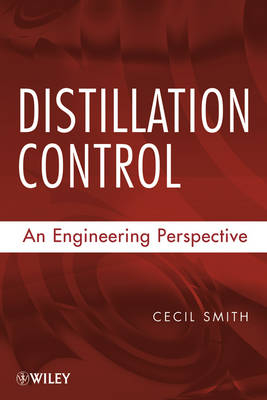
Distillation Control – An Engineering Perspective
John Wiley & Sons Inc (Hersteller)
978-1-118-26005-0 (ISBN)
- Keine Verlagsinformationen verfügbar
- Artikel merken
Cecil L. Smith, PhD, is President of Cecil L. Smith, Inc. a firm specializing in automation technology, founded after he left the facility of Louisiana State University. Dr. Smith has more than thirty-five years of experience in process control, with expertise spanning almost all control technology currently in use in industrial production facilities. Dr. Smith has been listed among InTech magazine's fifty most influential industry innovators.
Preface ix 1 Principles 1 1.1. Separation Processes 2 1.2. Total Material Balance 9 1.3. Refl ux and Boilup Ratios 13 1.4. Total Material Balance around Condenser 18 1.5. Total Material Balance around Reboiler 21 1.6. Component Material Balances 24 1.7. Energy and the Separation Factor 28 1.8. Multicomponent Distillation 35 1.9. Stage-by-Stage Separation Model 38 1.10. Formulation of the Control Problem 47 1.11. Tower Internals 50 1.12. Flooding 55 1.13. Tray Hydraulics 59 1.14. Inverse Response in Bottoms Level 62 1.15. Composition Dynamics 65 References 69 2 Composition Control 70 2.1. Product Specifications 71 2.2. Columns in Series 75 2.3. Composition Analyzers 78 2.4. Temperature 83 2.5. Distillate Composition Control: Constant Boilup 91 2.6. Distillate Composition Control: Constant Bottoms Flow 96 2.7. Operating Lines 100 2.8. Temperature Profi les 106 2.9. Feed Composition Disturbances 111 2.10. Bottoms Composition Control 116 2.11. Propagation of Variance in Level Control Configurations 122 2.12. Level Control in Direct Material Balance Configurations 126 3 Pressure Control and Condensers 136 3.1. Pressure Control 137 3.2. Once-Through Heat Transfer Processes 142 3.3. Water-Cooled Condensers 147 3.4. Flooded Condensers 151 3.5. Air-Cooled Condensers 159 3.6. Partial Condensers 162 3.7. Atmospheric Towers 167 3.8. Vacuum Towers 169 3.9. Floating Pressure/Pressure Minimization 173 Reference 179 4 Reboilers and Feed Preheaters 180 4.1. Types of Reboilers 181 4.2. Steam-Heated Reboilers 185 4.3. Hot Oil 195 4.4. Fired Heaters 198 4.5. Feed Preheater 200 4.6. Economizer 204 References 208 5 Applying Feedforward 209 5.1. Feed Flow and Composition 210 5.2. Internal Reflux Control 220 5.3. Extreme Feedforward 226 5.4. Feedforward for Bottoms Level 229 5.5. Feedforward for Column Pressure 234 5.6. Product Compositions 238 Reference 242 6 Unit Optimization 243 6.1. Energy and Separation 244 6.2. Optimization of a Column 250 6.3. Constraints in Distillation Columns 255 6.4. Control Configurations for Single Constraint 258 6.5. Control Configurations for Multiple Constraints 266 References 272 7 Double-End Composition Control 273 7.1. Defining the Problem 273 7.2. Options for Composition Control 275 7.3. Relative Gain 283 7.4. Relative Gains from Open Loop Sensitivities 290 7.5. Relative Gains for Other Configurations 294 7.6. Ratios for Manipulated Variables 296 7.7. Effect of Operating Objectives 300 7.8. MPC 303 8 Complex Towers 306 8.1. Heat Integration 307 8.2. Side Heater/Side Cooler 311 8.3. Sidestreams 316 8.4. Withdrawing a Liquid Sidestream 319 8.5. Withdrawing a Vapor Sidestream 322 8.6. Composition Control in Sidestream Towers 324 Index 329
| Erscheint lt. Verlag | 20.3.2012 |
|---|---|
| Verlagsort | New York |
| Sprache | englisch |
| Maße | 150 x 250 mm |
| Gewicht | 666 g |
| Themenwelt | Technik ► Elektrotechnik / Energietechnik |
| Technik ► Maschinenbau | |
| Technik ► Umwelttechnik / Biotechnologie | |
| ISBN-10 | 1-118-26005-8 / 1118260058 |
| ISBN-13 | 978-1-118-26005-0 / 9781118260050 |
| Zustand | Neuware |
| Haben Sie eine Frage zum Produkt? |